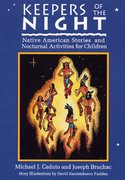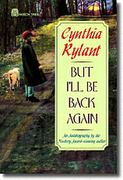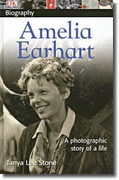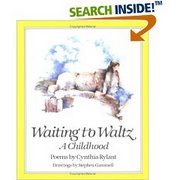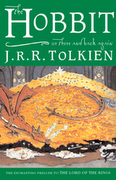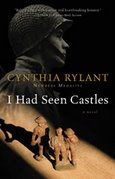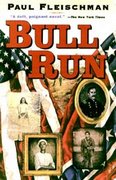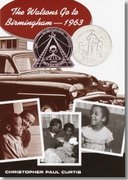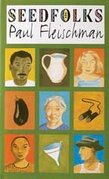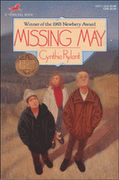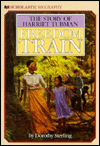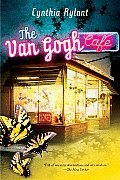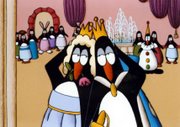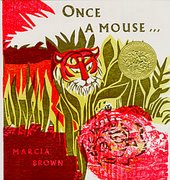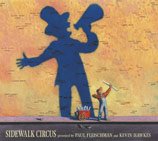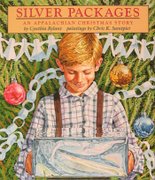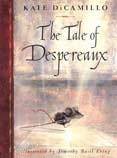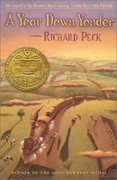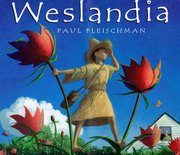By Kate DiCamillo
Three lives interconnect in an unusual yet seamless manner in The Tale of Despereaux. Kate DiCamillo’s plays the reader like a master at the chessboard pulling the reader in and not letting go. I picked up The Tale of Despereaux to just read a chapter or two before sleeping and found myself unable to stop reading until the book was finished.
The story meshes a mouse, a rat, and a serving girl in intrigue, revenge, and a kidnapping in which the life a princess hangs in the balance. Fear not, the princess is rescued by an incredibly brave but tiny mouse from a vengeful rat named Roscuro and a dull-witted and ill-used serving girl with a hideous name, Miggery Sow.
The mouse council condemns Despereaux, the mouse, to death because he cannot conform to the society’s codes of conduct. By a cruel twist of fate with shades of the Biblical story of Cain and Abel, Despereaux is accused by his own father and drug to his death by a red thread around his neck by his very own brother. Poor Despereaux is rescued by Gregory, the jailer, who loves to be told stories which Despereaux happens to tell quite well.
Roscuro, the rat, snuck into the castle and fell into the queen’s soup. The queen promptly fell over dead causing the princess to blame Roscuro. He escaped back into darkness and plotted his revenge against the princess.
Miggery Sow, a simple-minded serving girl, has been abused for years with repeated clouts to the ears rendering her somewhat deaf. She finds her way into employment in the castle and into the clutches of Roscuro’s plot for revenge.
From this point on, the story moves quickly to the actual kidnapping and rescue
of the princess. Despereaux is welcomed back into his family by his repentant father and lives happily ever after.
Dialogue is wonderfully written in The Tale of Despereaux. I found myself talking to some of the characters out loud, responding as if I were in the story, too. I will definitely be encouraging my students to read this story. Unfortunately, we do not have enough copies for even a small reading group, but we will! When do we have enough copies, this web site has an entire unit available for use.
http://content.scholastic.com/browse/unitplan.jsp?id=163
Monday, February 26, 2007
Saturday, February 24, 2007
A Single Shard
by Linda Sue Park
The story of orphaned Tree-Ear, named for the silent but ever-present tree fungus of Korea, demonstrates fortitude in the face of adversity. The reader accompanies Tree-Ear as he visits trash heaps to forage for food without loosing his self respect, and keeping his integrity by refusing to steal even when he would clearly not get caught. With the tools of integrity, fortitude, and humility he rises from being a homeless trash sifter to a renowned potter.
Tree-Ear’s most effective method of survival is to find an area of interest, find the expert in that area, and make him indispensable. In common usage; “find a niche and fill it”. He also did not expect to start at the top. He REQUESTED the 12th century equivalent of minimum wages (one meal a day) and stuck with the job until his expertise earned a better wage.
He fought to protect his employer’s property, even at personal risk, and undertook a long, hazardous journey to deliver two exquisite celadon pots. Halfway through the journey, he is set upon by bandits, and the pots are destroyed. He finds the largest remaining “Single Shard” and continues on his journey, hoping that the quality of the work visible will suffice to justify a contract for more pottery. His success is as much due to his own refusal to give up as it is to the skill of the potter he works for.
A Single Shard does an excellent job of demonstrating why the values that employers appreciate so much are the result of character rather than skill. As a result, it encourages young readers who have “given up” on a classroom subject because it seems too difficult.
Lesson plans may be found http://www.webenglishteacher.com/park.html.
This story has personal meaning, as my spouse will someday become a renowned potter, too.
The story of orphaned Tree-Ear, named for the silent but ever-present tree fungus of Korea, demonstrates fortitude in the face of adversity. The reader accompanies Tree-Ear as he visits trash heaps to forage for food without loosing his self respect, and keeping his integrity by refusing to steal even when he would clearly not get caught. With the tools of integrity, fortitude, and humility he rises from being a homeless trash sifter to a renowned potter.
Tree-Ear’s most effective method of survival is to find an area of interest, find the expert in that area, and make him indispensable. In common usage; “find a niche and fill it”. He also did not expect to start at the top. He REQUESTED the 12th century equivalent of minimum wages (one meal a day) and stuck with the job until his expertise earned a better wage.
He fought to protect his employer’s property, even at personal risk, and undertook a long, hazardous journey to deliver two exquisite celadon pots. Halfway through the journey, he is set upon by bandits, and the pots are destroyed. He finds the largest remaining “Single Shard” and continues on his journey, hoping that the quality of the work visible will suffice to justify a contract for more pottery. His success is as much due to his own refusal to give up as it is to the skill of the potter he works for.
A Single Shard does an excellent job of demonstrating why the values that employers appreciate so much are the result of character rather than skill. As a result, it encourages young readers who have “given up” on a classroom subject because it seems too difficult.
Lesson plans may be found http://www.webenglishteacher.com/park.html.
This story has personal meaning, as my spouse will someday become a renowned potter, too.
A Year Down Yonder
by Richard Peck
The 1999 Newbery Award winner is notable in that it was well received outside of the young adult category. A year Down Yonder was also a National Book Award Finalist, ALA Notable Book, etc. The story of a young girl from Chicago during the depression sent to live with Grandma Dowdel in rural Illinois contains rich characterizations and earthy, though innocent, humor.
Mary Alice, at 15 and due to family financial stress, must spend a year with her infamous grandmother. Imagine a Kate Smith sized Betty Davis with a shotgun, itchy fingers, and a wicked sense of humor. Grandma is an older woman in a small community where everyone has long standing feuds and friendships, but can’t be sure which is which.
Mary Alice stepped off the train in her traveling cloths and was immediately taken to school (dress clothes and all) to be introduced to her one-room school. The local bully immediately charges her protection of $1. When she gets home she is in debt ($1 is a week’s wages at that time) and is completely disconsolate over her first day. The grandmother’s resolution is fast, wicked, and hilarious.
Made abundantly clear by reactions from everyone in town, nobody messes with Grandma. When she walks into the school to present her granddaughter, the principal wears the expression of someone facing a badger and almost starts backing away. Even the local “bad boys”, on a spree of pranks during Halloween, only cross her once when her response to their plan of outhouse destruction is met with tripwires and pans of horse glue.
Throughout the year that Mary Alice stays in rural Illinois, she transforms from the city bred, shy, and proper young girl to a much tougher version of herself. During that transition, her resentment at being “farmed out” to relatives also changes. By the end of the story the main character, as well as the reader, has a much better appreciation for the confusion that results when people of different worlds must cohabitate. More importantly, the reader should understand that many of the cultural differences that are so confusing to outsiders have a purpose. You just need to see those purposes in action to understand yourself.
A Year Down Yonder is an exceptional book for new students changing from city to rural schools or the reverse...or for children who are going to see Grandma for the first time.
The 1999 Newbery Award winner is notable in that it was well received outside of the young adult category. A year Down Yonder was also a National Book Award Finalist, ALA Notable Book, etc. The story of a young girl from Chicago during the depression sent to live with Grandma Dowdel in rural Illinois contains rich characterizations and earthy, though innocent, humor.
Mary Alice, at 15 and due to family financial stress, must spend a year with her infamous grandmother. Imagine a Kate Smith sized Betty Davis with a shotgun, itchy fingers, and a wicked sense of humor. Grandma is an older woman in a small community where everyone has long standing feuds and friendships, but can’t be sure which is which.
Mary Alice stepped off the train in her traveling cloths and was immediately taken to school (dress clothes and all) to be introduced to her one-room school. The local bully immediately charges her protection of $1. When she gets home she is in debt ($1 is a week’s wages at that time) and is completely disconsolate over her first day. The grandmother’s resolution is fast, wicked, and hilarious.
Made abundantly clear by reactions from everyone in town, nobody messes with Grandma. When she walks into the school to present her granddaughter, the principal wears the expression of someone facing a badger and almost starts backing away. Even the local “bad boys”, on a spree of pranks during Halloween, only cross her once when her response to their plan of outhouse destruction is met with tripwires and pans of horse glue.
Throughout the year that Mary Alice stays in rural Illinois, she transforms from the city bred, shy, and proper young girl to a much tougher version of herself. During that transition, her resentment at being “farmed out” to relatives also changes. By the end of the story the main character, as well as the reader, has a much better appreciation for the confusion that results when people of different worlds must cohabitate. More importantly, the reader should understand that many of the cultural differences that are so confusing to outsiders have a purpose. You just need to see those purposes in action to understand yourself.
A Year Down Yonder is an exceptional book for new students changing from city to rural schools or the reverse...or for children who are going to see Grandma for the first time.
Monday, February 19, 2007
Movie Review - Bridge to Terabithia
Leaves rustling, twigs crackling, and boughs creaking overhead through a sun streaked canopy of leaves give the imaginary land of Terabithia atmosphere and a the viewer a quickening of the pulse. The viewers become emotionally invested in the struggles against loneliness, against bullies, and against parental self-absorption as Jess and Leslie create a safe haven from their troubles. Suspense and emotional traumas drive this story.
Special effects were added to update the movie, but the effects added nothing. Overall, the impact of the film would have been heightened had the special effects been left out all together, and the imagination been allowed to explore the unknown corners of Terabithia. In this instance, the filmmakers gave viewers too much information.
Special effects were added to update the movie, but the effects added nothing. Overall, the impact of the film would have been heightened had the special effects been left out all together, and the imagination been allowed to explore the unknown corners of Terabithia. In this instance, the filmmakers gave viewers too much information.
Saturday, February 17, 2007
Response to Bridge to Terabithia
I have read several reviews about the Bridge to Terabithia , and I agree that the story is well written and easy to understand. The story is about a lonely boy named Jess from a conservative, rural family meeting and becoming friends with an outgoing, yet lonely girl named Leslie from a liberal, urban family. The two children create an imaginary world of their own in which they have adventures and act out their fantasies. Unfortunately, while Jess is enjoying a special outing with the music teacher, Leslie drowns. Plot lines involving two people meeting then one of the characters dying aren’t unusual. The same story line was used in Love Story, A Separate Peace, My Girl, and other novels.
What is unique about Bridge to Terabithia is Katherine Paterson’s command of dialogue. The dialogue in Bridge is so natural that the speakers could be any two children of eight years old at play.
To me, the most significant aspect of the Bridge to Terabithia is how the author handled the story after Leslie died. Katherine Paterson led Jess through the grieving process. She allowed him to be glad that he was alive, angry at Leslie for getting herself killed, torn with grief because he did not invite her to go along on the trip with the music teacher, through denial, and finally to acceptance. Jess was not forced to listen to trite comments like ‘chin up’ and ‘don’t cry’, or “She’s gone to a better place.”
Several sources have lesson plans for use with Bridge to Terabithia. This web site looked particularly helpful.
http://www.webenglishteacher.com/paterson.html
What is unique about Bridge to Terabithia is Katherine Paterson’s command of dialogue. The dialogue in Bridge is so natural that the speakers could be any two children of eight years old at play.
To me, the most significant aspect of the Bridge to Terabithia is how the author handled the story after Leslie died. Katherine Paterson led Jess through the grieving process. She allowed him to be glad that he was alive, angry at Leslie for getting herself killed, torn with grief because he did not invite her to go along on the trip with the music teacher, through denial, and finally to acceptance. Jess was not forced to listen to trite comments like ‘chin up’ and ‘don’t cry’, or “She’s gone to a better place.”
Several sources have lesson plans for use with Bridge to Terabithia. This web site looked particularly helpful.
http://www.webenglishteacher.com/paterson.html
Thursday, February 15, 2007
My Side of the Mountain
By Jean Craighead George
Which of us did not want to “run away from home” at least once in our childhood?
This Newbery Award winning book published in 1959 speaks to that moment in almost all children’s lives when they crave independence and an opportunity to escape the cocoon of comfortable safety. With woodcraft and herb-lore worthy of a seasoned mountain man, Sam Gribley successfully tackles a full year in the forest with only some string, a hatchet, and superior level-headedness. Along the way, he finds the independence many young people crave, but he also finds that after a year of being alone he no longer needs to prove anything to himself or to anyone else. As a teacher, I feel that I am constantly being scrutinized and asked to evaluate and compare myself to others.
By example, Sam captures and trains a hawk to hunt for food, befriends mountain animals, and avoids human contact only miles from a small town. When finally visited by his father and a friend, he serves them onion soup in a turtle shell, blackened venison steak flanks, and fluffy mashed cattail tubers, mushrooms seasoned with dogtooth violet bulbs, smothered in gravy thickened with acorn flour. I’m not sure I could cook that much less eat it.
Told in straight-forward pragmatic language, Sam tells his story while including excerpts from his journal/cookbook. While detailing the hardships he overcame to survive in the forest, the reader is subtly reminded that the child is never far from a true rescue. He knows exactly where town is and visits the library when in need of lore. The child reader is left knowing there is no critical threat to Sam’s safety but is only “on his own” as long as Sam desires.
In the end, the story is less about a child running away from home (a dubious subject for a children’s story) and more about children’s desire to succeed, and the reward for parents who allow those opportunities to grow.
After thinkng about this story overnight, I realize that I would not have had the courage to allow our son to camp out in the forest alone. No way!
Which of us did not want to “run away from home” at least once in our childhood?
This Newbery Award winning book published in 1959 speaks to that moment in almost all children’s lives when they crave independence and an opportunity to escape the cocoon of comfortable safety. With woodcraft and herb-lore worthy of a seasoned mountain man, Sam Gribley successfully tackles a full year in the forest with only some string, a hatchet, and superior level-headedness. Along the way, he finds the independence many young people crave, but he also finds that after a year of being alone he no longer needs to prove anything to himself or to anyone else. As a teacher, I feel that I am constantly being scrutinized and asked to evaluate and compare myself to others.
By example, Sam captures and trains a hawk to hunt for food, befriends mountain animals, and avoids human contact only miles from a small town. When finally visited by his father and a friend, he serves them onion soup in a turtle shell, blackened venison steak flanks, and fluffy mashed cattail tubers, mushrooms seasoned with dogtooth violet bulbs, smothered in gravy thickened with acorn flour. I’m not sure I could cook that much less eat it.
Told in straight-forward pragmatic language, Sam tells his story while including excerpts from his journal/cookbook. While detailing the hardships he overcame to survive in the forest, the reader is subtly reminded that the child is never far from a true rescue. He knows exactly where town is and visits the library when in need of lore. The child reader is left knowing there is no critical threat to Sam’s safety but is only “on his own” as long as Sam desires.
In the end, the story is less about a child running away from home (a dubious subject for a children’s story) and more about children’s desire to succeed, and the reward for parents who allow those opportunities to grow.
After thinkng about this story overnight, I realize that I would not have had the courage to allow our son to camp out in the forest alone. No way!
Picture Book Response - Weslandia
Lonely children often withdraw inward and create imaginary worlds of their own. Wesley, the main character of Weslandia, created a safe haven and a private kingdom as a summer project. Wesley is misunderstood by his parents and hassled by his classmates because he refuses to conform to their expectations.
Unlike Jess in the Bridge to Terabethia and Harry Potter from the books by J.K. Rowling, Wesley approaches his fantasy kingdom without fear. He does not empathize with his fears nor does he fear their teasing. Wesley is a true pioneer in a child’s world.
Wesley’s transformation from class nerd to a junior Bill Gates is illustrated in bold colors. After all, he is one bold kid! Wesley is innovative as he creates an entire civilization and culture.
I was pleased to find a number of web sites on the Internet that contained lesson plans for Weslandia. One web site in particular, http://web.syr.edu/~jjvizthu/weslandia.htm, is very thorough, and I plan to try it with my students. Additional ways to use Weslandia in the classroom could be vocabulary study, a unit on respecting diversity or promoting individualism, or having the courage to resist peer pressure.
Unlike Jess in the Bridge to Terabethia and Harry Potter from the books by J.K. Rowling, Wesley approaches his fantasy kingdom without fear. He does not empathize with his fears nor does he fear their teasing. Wesley is a true pioneer in a child’s world.
Wesley’s transformation from class nerd to a junior Bill Gates is illustrated in bold colors. After all, he is one bold kid! Wesley is innovative as he creates an entire civilization and culture.
I was pleased to find a number of web sites on the Internet that contained lesson plans for Weslandia. One web site in particular, http://web.syr.edu/~jjvizthu/weslandia.htm, is very thorough, and I plan to try it with my students. Additional ways to use Weslandia in the classroom could be vocabulary study, a unit on respecting diversity or promoting individualism, or having the courage to resist peer pressure.
Wednesday, February 7, 2007
Picture Book Response - "The Custodian From The Black Lagoon"
The Custodian from The Black Lagoon was written by Mike Thaler and illustrated by Jared Lee. This picture book was written from the point of view of a small boy who lives in terror of the frightening Fester Smudge, the school custodian.
Mr. Smudge is portrayed as a Boris Karloff-type character, dark and scary creeping about at night. Multiples references are made to other characters in literature like the Phantom of the Opera and Dr. Frankenstein. These references open the door to book discussions. To make the story even more appealing, skulls, rats, dragons, and other creepy critters fill the pages.
The author uses more sophisticated vocabulary than is often used in picture books; however, his word choice lends itself to vocabulary study with lots of examples of multisyllabic words, double consonants, and verb tenses. Literary techniques like onomatopoeia add interest. This picture book could be used by many grade levels just for the vocabulary alone.
Like many picture books, the moral of the story is not to judge other people as Mr. Smudge turns out to be a nice fellow. I laugh at this book because it reminds me very much of the school where I work. We have the nicest custodian in our dark dungeon!
Mr. Smudge is portrayed as a Boris Karloff-type character, dark and scary creeping about at night. Multiples references are made to other characters in literature like the Phantom of the Opera and Dr. Frankenstein. These references open the door to book discussions. To make the story even more appealing, skulls, rats, dragons, and other creepy critters fill the pages.
The author uses more sophisticated vocabulary than is often used in picture books; however, his word choice lends itself to vocabulary study with lots of examples of multisyllabic words, double consonants, and verb tenses. Literary techniques like onomatopoeia add interest. This picture book could be used by many grade levels just for the vocabulary alone.
Like many picture books, the moral of the story is not to judge other people as Mr. Smudge turns out to be a nice fellow. I laugh at this book because it reminds me very much of the school where I work. We have the nicest custodian in our dark dungeon!
Saturday, February 3, 2007
More Than Lending Library
I have decided to name this blog the More Than Lending Library to share a mistake that I have made in the past. My mistake was to loan my only copy of a book to a student. Good intentions aside, I have lost many a book this way. Now, when I find a great book for children, I buy an extra copy for my class library. Yes, I have a checkout process in my classroom; however, having an extra copy keeps me sane.
Subscribe to:
Posts (Atom)


